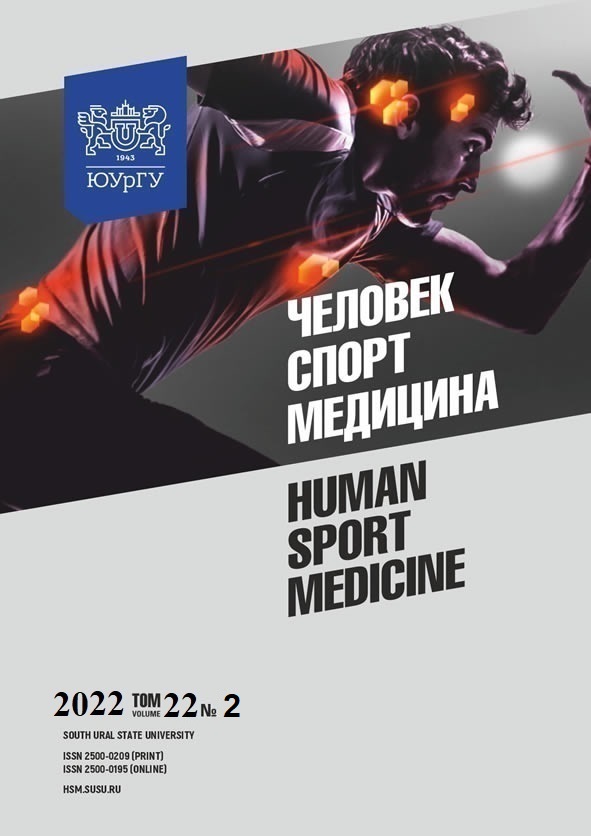PHYSICAL DEVELOPMENT AND PHYSICAL FITNESS OF COMBAT ATHLETES, FOOTBALL PLAYERS AND GYMNASTS AGED 6–9 YEARS
Abstract
Aim. The paper aims to identify the effect of training sessions (combat sports, football, artistic gymnastics) on morphological and functional characteristics and physical fitness of boys aged from 6 to 9 years. Materials and methods. The study involved 352 boys aged from 6 to 9 years with different levels of physical activity (121 non-athletes; 79 combat athletes, 46 gymnasts, 113 football players). The following data were obtained for the purpose of the study: body dimensions, BMI, labile components, HR, BP, hand grip strength, shuttle run time, standing long jump, flexibility. Results. It was found that body dimensions in this age group corresponded to growth patterns combined with sports-related effects. From 6 years, the development of labile components is considered as a positive effect of training sessions, especially in combat sports and artistic gymnastics. Physical fitness was higher in athletes compared to non-athletes, while the highest performance was achieved in gymnasts. Conclusion. In boys aged 6–9 years, training sessions reduce the risk of overweight and obesity, are a condition for muscle mass development, which is associated with better physical performance, including agility, strength of the upper and lower extremities, and flexibility. The difference between athletes and non-athletes became more evident with time with the least evident difference in the age of 6 years. Sports-related effects on physical fitness in boys are associated with the start date and exercise volume: the smallest differences were found between combat athletes/football players and non-athletes. The best physical fitness was found in gymnasts as a result of acute adaptation to exercise, which required regular medical and biological control.
References
References on translit
Copyright (c) 2022 Human. Sport. Medicine

This work is licensed under a Creative Commons Attribution-NonCommercial-NoDerivatives 4.0 International License.















